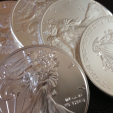How Banks Create Money Out Of Thin Air
“The credit creation theory was something I intuitively grasped before from other alt-media sites, John nailed it down.” – Comment from someone who watched the podcast below
The “money supply” number as provided by official Federal Reserve statistics, it turns out, is not the true money supply. The fractional banking system allows banks to lend money on its reserve capital at a rate of 90 cents for every $1 of reserve capital. Technically, a loan is not considered “money creation” because of the legal provision that a loan has to be paid back. Because of this legal “glitch,” the creation of credit is not considered to be part of the money supply.
Yet, borrowed money behaves in the economy exactly like printed money until that point in time at which the borrow must pay back the loan. The spending power created by the creation of credit is identical to the spending power of printed money. The person or entity doing the spending does not know the difference.
This means that the amount of debt issued and outstanding by the U.S. Treasury should be added to the “official” money supply number (for example, M2) in order to calculate the true supply of money circulating in the system. This especially true because the amount of debt issued by the U.S. Government increases in quantity on a daily basis – it’s never repaid (anything considered “repaid” has been repaid with new debt).
In this podcast, which is the latest segment of John Titus’ “Mafiacracy” series, Titus explains how and why it is that banks create money out of thin air. Once you understand the principles reviewed in this podcast, you’ll understand how the U.S. became a giant Ponzi Scheme:
********

















